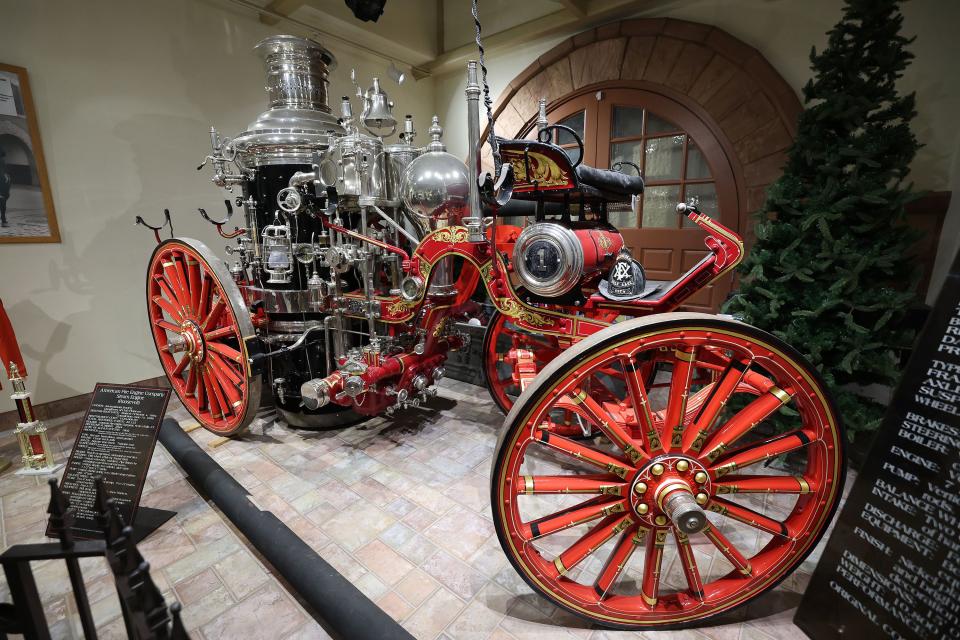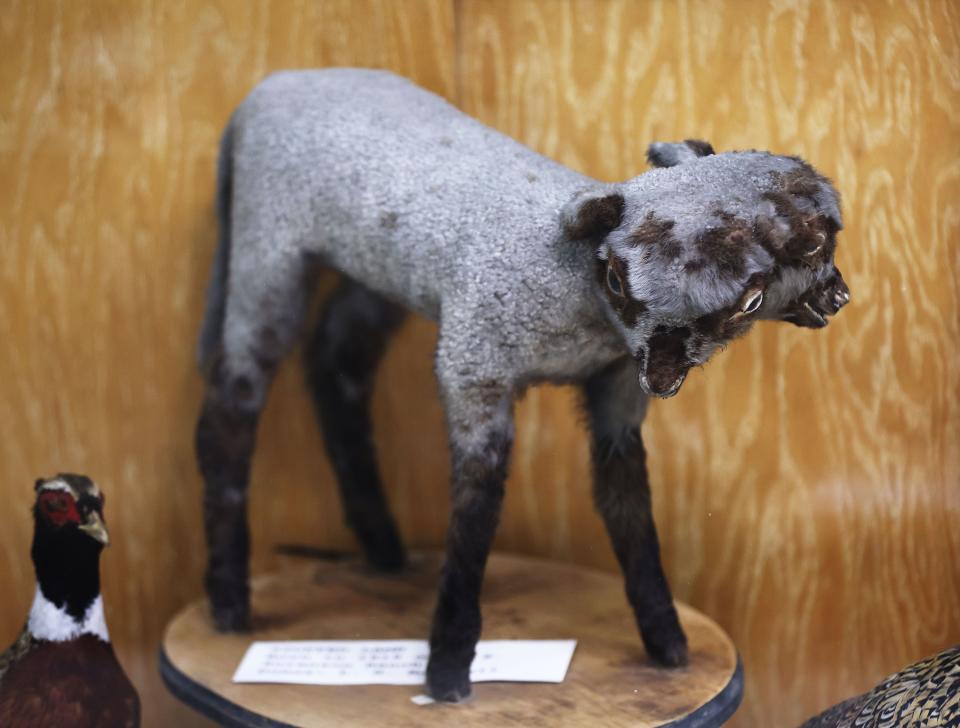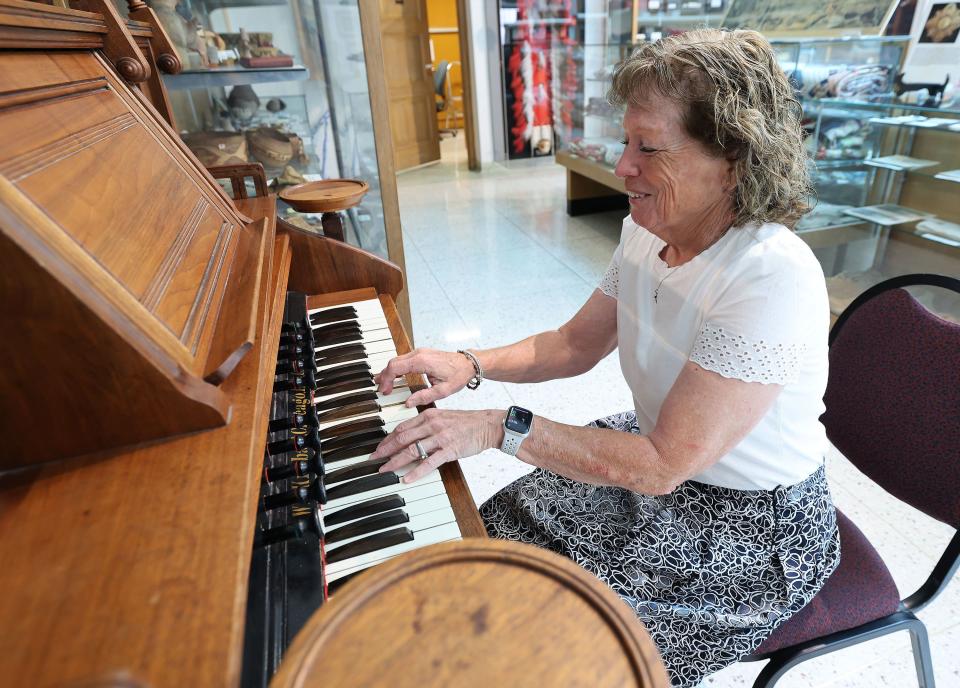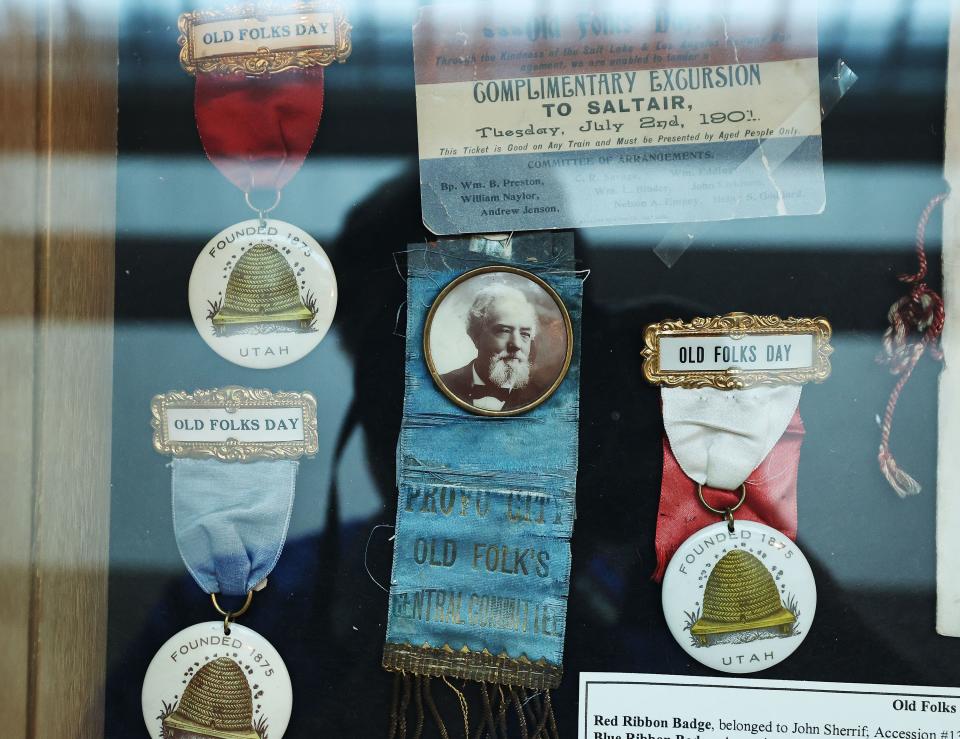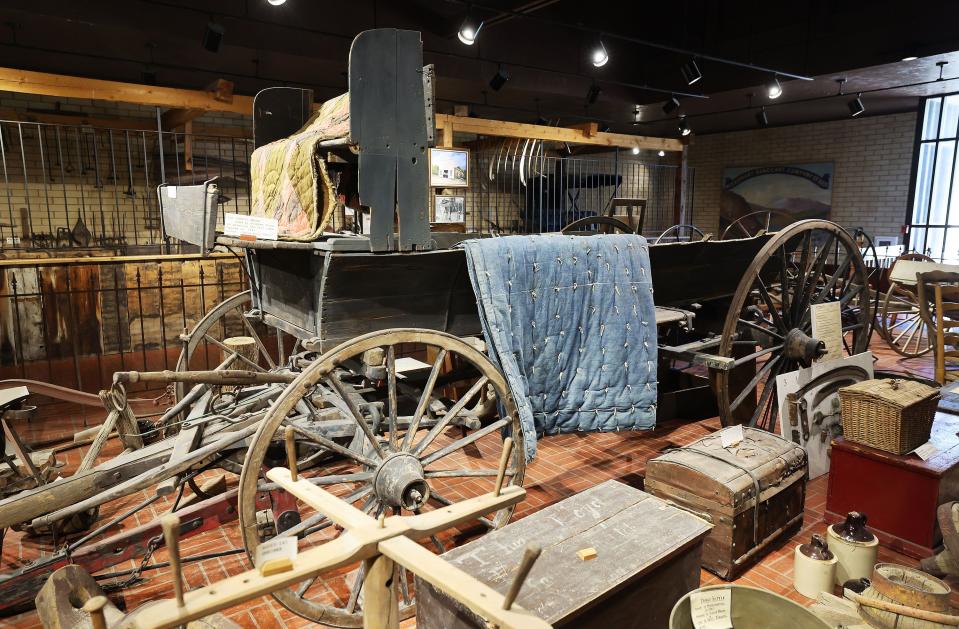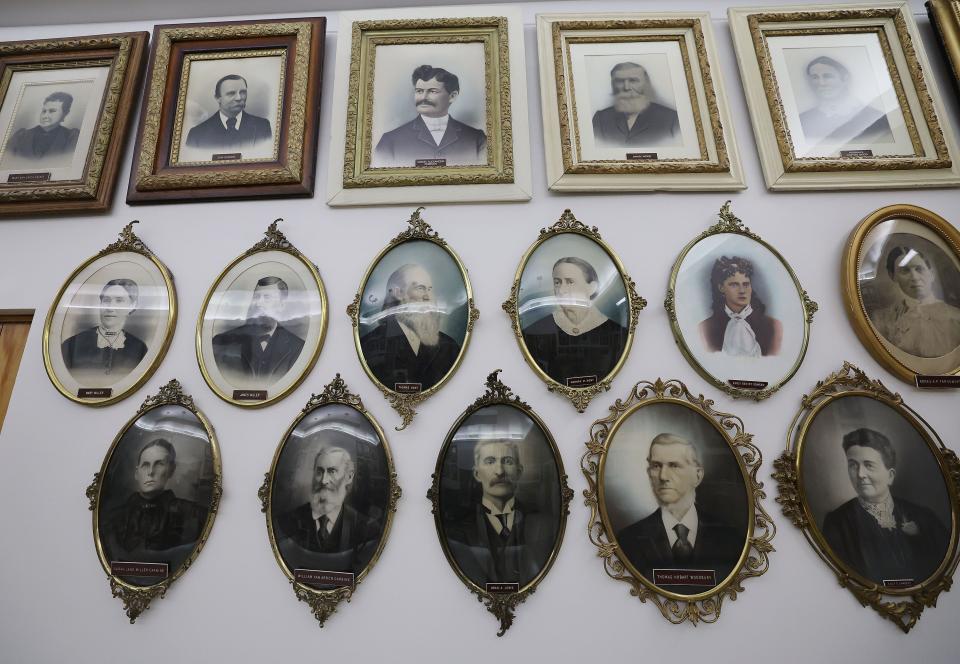The Pioneer past lives on, thanks to the Daughters
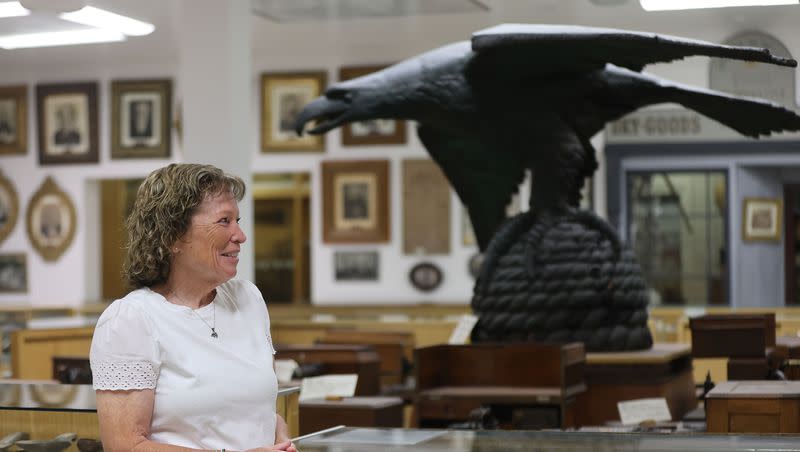
It’s been 176 years since the first permanent settlers arrived in the Salt Lake Valley by foot, wagon, handcart and horse, and 154 years since the transcontinental railroad was completed, transforming a journey that took months to one that took days.
The estimated 70,000 people who came the hard way between 1847 and 1869 are regarded as genuine pioneers.
All of them are gone now, of course, their wagon tracks replaced by asphalt, their homesteads by high-rises, their mules by F-150s, their storehouses by Costco.
But they’re not gone without a trace. Evidence of their existence abounds to a remarkable degree, thanks to the women who are their descendants.
The Daughters of Utah Pioneers, or DUP, organization has taken upon itself the privilege and responsibility of collecting and preserving every bit of the physical pioneer past it can possibly get its hand on.
The artifacts are on display at the Pioneer Memorial Museum located at 300 S. Main Street in Salt Lake City, directly west of the state capitol.
How many items are we talking about? Nearly 50,000 at last count. Everything from photographs to paintings to pottery to plowshares, from swords to guns to wagons to quilts to hymnals, from tables to chairs to desks to Indian jewelry to fire engines to military uniforms.
There’s the actual wooden leg James Moyle walked on to get to the temple construction site, there’s the wagon Brigham Young rode in when he entered the Salt Lake Valley, there’s the original carved eagle that spanned Eagle’s Gate, there’s the sign from the Central Pacific Railroad commemorating the laying of 10 miles of track in a single day on April 28, 1869, there’s the piano Abraham Hunsaker wrapped in buffalo robes to get to Utah, there’s a first edition Book of Mormon that was carried across the plains — several of them, actually.
Also stored away for safekeeping are no less than 50,000 histories written and recorded by the pioneers.
Making sure all this history is dusted, cared for, protected, preserved, annotated and properly displayed are a handful of museum volunteers, starting with the DUP’s current president, Ellen Jeppson.
The museum’s roots, Jeppson explains, date back well over a century, to the year 1901.
At that time, being a pioneer was hardly a novelty. Utah had only been settled for a little over 50 years. But already, there was concern that the old days and old ways would be forgotten as the pioneer past began to fade away.
To counteract that, a woman named Annie Taylor, the daughter of Church of Jesus Christ of Latter-day Saints President John Taylor, invited 46 women to her home to form the Daughters of Utah Pioneers. Their mission: “To perpetuate the names and achievements of the men, women and children who were the pioneers in founding this commonwealth, by preserving old landmarks … collecting artifacts and histories … and securing manuscripts, photographs, maps and all such data as shall aid in perfecting a record of the Utah pioneers.”
They began collecting artifacts before they qualified as artifacts.
At first, there was no central clearinghouse for pioneer material. Some of it was stored in the basements of the Beehive House and the Lion House, some of it in the basement of the state Capitol. But as the pioneer centennial approached in 1947, a campaign was launched to build a proper museum.
Thanks to their persistent lobbying and fundraising, the state of Utah gave the DUP a prime location west of the capitol to build the edifice. The daughters missed their 1947 deadline, but by 1950 they finally had a place to hold all their treasures.
For the past 83 years, the collection has continued to grow, as more and more pioneer descendants, now in their fifth and six generations, clean out their basements and donate their artifacts.
The museum is not uncrowded. Artifacts are piled everywhere, but nothing goes into storage. “Somehow we still manage to find a way to tuck things in here,” says Kari Main, the museum curator. “When you give it to us, we say it will be on display, your descendants will be able to come and see it.”
The ladies won’t even hazard a guess as to what is the most valuable item in their possession. Partly that’s because they don’t want to publicize dollar values, and partly because they don’t know. “We’ve never appraised anything,” says Main. Nor have they ever bought an object or sold an object.
And neither have they ever charged admission. Part of the deal when the state bequeathed the property to the DUP was that the museum would always be free to all.
For nearly 100 years, the museum has carried on without fuss or controversy, dedicated to its mission to make sure the present pays homage to the past.
The women who keep the doors open are convinced they’re getting help from their benefactors, aka the real pioneers.
“I can feel their presence,” says Jeppson, “they’re watching over their things and they’re benevolently helping us.”
Harriet Rasmussen, the DUP’s international registrar who is a direct descendant of Latter-day Saint leader Willard Richards, one of the earliest pioneers who arrived in 1847, enjoys saying “hi” to her late great ancestor every day when she arrives for her museum shift and passes by his life-sized picture. “A couple of years ago my husband died and I’d come here to do office work, often alone,” Rasmussen says. “But I never felt alone. It’s such a peaceful, pleasant place.”
Adds Jeppson, “There are so many things here you stand in front of and can’t believe it — very, very amazing things that were given to us because they knew we would care for them.”
